Higher classification Wildcat Rank Subspecies | Scientific name Felis silvestris ornata Phylum Chordata Order Carnivores | |
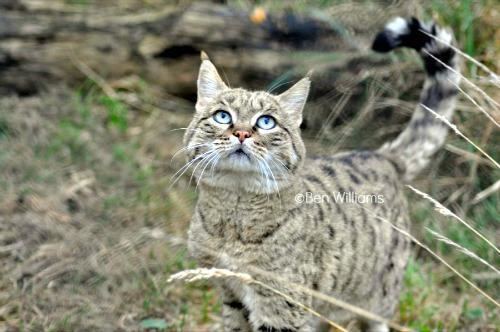 | ||
Similar Wildcat, Felidae, Felis, Felinae, African wildcat | ||
The Asiatic wildcat (Felis silvestris ornata) is a wildcat subspecies that occurs from the eastern Caspian north to Kazakhstan, into western India, western China and southern Mongolia. It is also known as the Asian steppe wildcat and Indian desert cat. The status Least Concern in the IUCN Red List is attributed to the species, including all subspecies of wildcats. There is no information on current status or population numbers for the felid's entire range, but populations are thought to be declining.
Contents

Characteristics
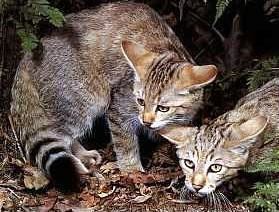
The Asian wildcat has a long, tapering tail, always with a short black tip, and with spots at the base. The forehead has a pattern of four well-developed black bands. A small but pronounced tuft of hair up to one cm long grows from the tip of each ear. Paler forms of Asian wildcat live in drier areas and the darker, more heavily spotted and striped forms occur in more humid and wooded areas. The throat and ventral surfaces are whitish to light grey to cream, often with distinct white patches on the throat, chest and belly. Throughout its range the Asian wildcat’s coat is usually short, but the length of the fur can vary depending on the age of the animal and the season of the year. Compared to the domestic cat, Asian wildcats have relatively longer legs. Males are generally heavier than females.
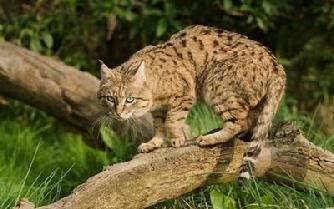
In Pakistan and India, wildcats have pale sandy yellow coats, marked with small spots that tend to lie in vertical lines down the trunk and flanks. The wildcats of Central Asia have a more greyish-yellow or reddish background color, marked distinctly with small black or red-brown spots. The spots are sometimes fused into stripes, especially in the Central Asian regions east of the Tian Shan Mountains.
They weigh about 3 to 4 kg (6.6 to 8.8 lb).
Distribution and habitat
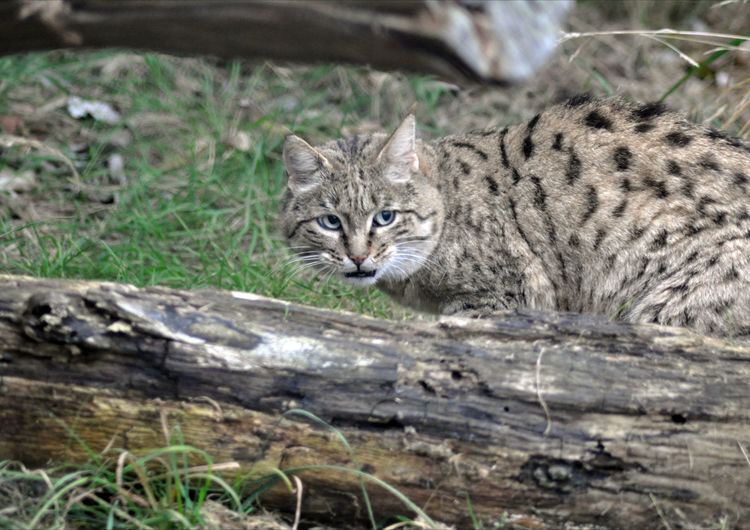
The Caucasus is the transitional zone between the European wildcat to the north and west, and the Asiatic wildcat to the south and east. In this region, European wildcat is present in montane forest, and Asiatic wildcat is present in the low-lying desert and semi-desert areas adjoining the Caspian sea. It usually occurs in close proximity to water sources, but is also able to live year-round in waterless desert. It ranges up to 2,000 to 3,000 m (6,600 to 9,800 ft) in mountain areas with sufficient dense vegetation. Snow depth limits the northern boundaries of its range in winter.
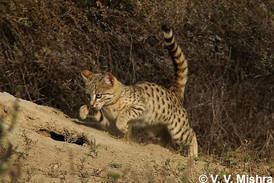
In Iran, the Asiatic wildcat has been recorded in arid plains, lush forests, coastal areas and mountains, but not in extremely high altitudes and deserts.
In Afghanistan, the Asiatic wildcat has been recorded prior to 1973 in the central Hazarajat mountains and the steppe region, near Shibar Pass and Herat, and in Bamyan Province.
In India, the Asiatic wildcat inhabits the Thar Desert and is associated with scrub desert. In 1999, it was still reported as common in the Rajasthani districts of Bikaner, Barmer, Jaisalmer, Pali and Nagaur. Only four sightings were reported from the Thar Desert between 1999 and 2006. In Pakistan, it was known from arid regions in the Sindh Province.
In the 1990s, wildcats were reported common and populations stable in the lowlands of Kazakhstan. A pronounced loss of range has been documented in Azerbaijan.
Within China, the Asian wildcat is distributed in Xinjiang, Qinghai, Gansu, Ningxia, Shaanxi, and Inner Mongolia. Records from northern Tibet as well as Sichuan are questionable. Prior to 1950, it was the most abundant felid in Xingjian dwelling along all major river basin systems and Taklimakan desert but later it got confined to three regions of southern Xinjiang only viz., Bayingolin Mongol Autonomous Oblast, Aksu and Hotan. It is declining rapidly in its natural habitat in the Xinjiang desert region of China mainly because of excessive hunting for pelt trade followed by shrinkage of its habitat due to cultivation, oil and gas exploration and excessive use of pesticides.
Ecology and behaviour
Asiatic wildcats are frequently observed in the daytime. They frequently use rock crevices or burrows dug by other animals.
In the scrub habitat of western Rajasthan, they live largely on desert gerbils, but also hunt hares, rats, doves, gray partridges, sandgrouses, peafowl, bulbuls, sparrows and eat eggs of ground birds. They have also been observed killing cobras, saw-scale vipers, sand boas, geckos, scorpions and beetles.
Results of a feed item analysis of Asiatic cats in the Tarim Basin revealed that their primary prey was the Tarim hare followed by gerbil, jerboa, poultry and small birds, fish, Cardiocranius spp., Agamid lizards and sand lizard.
Threats
Female Asiatic wildcats mate quite often with domestic males, and hybrid offspring are frequently found near villages where wild females live. They have been hunted at large in Afghanistan; in 1977 over 1200 pelts manufactured into different articles were on display in Kabul bazaars.
Conservation
Felis silvestris is included on CITES Appendix II. In Afghanistan the species is legally protected, has been placed on the country's first Protected Species List in 2009, banning all hunting and trading within the country, and is proposed as a priority species for future study.
